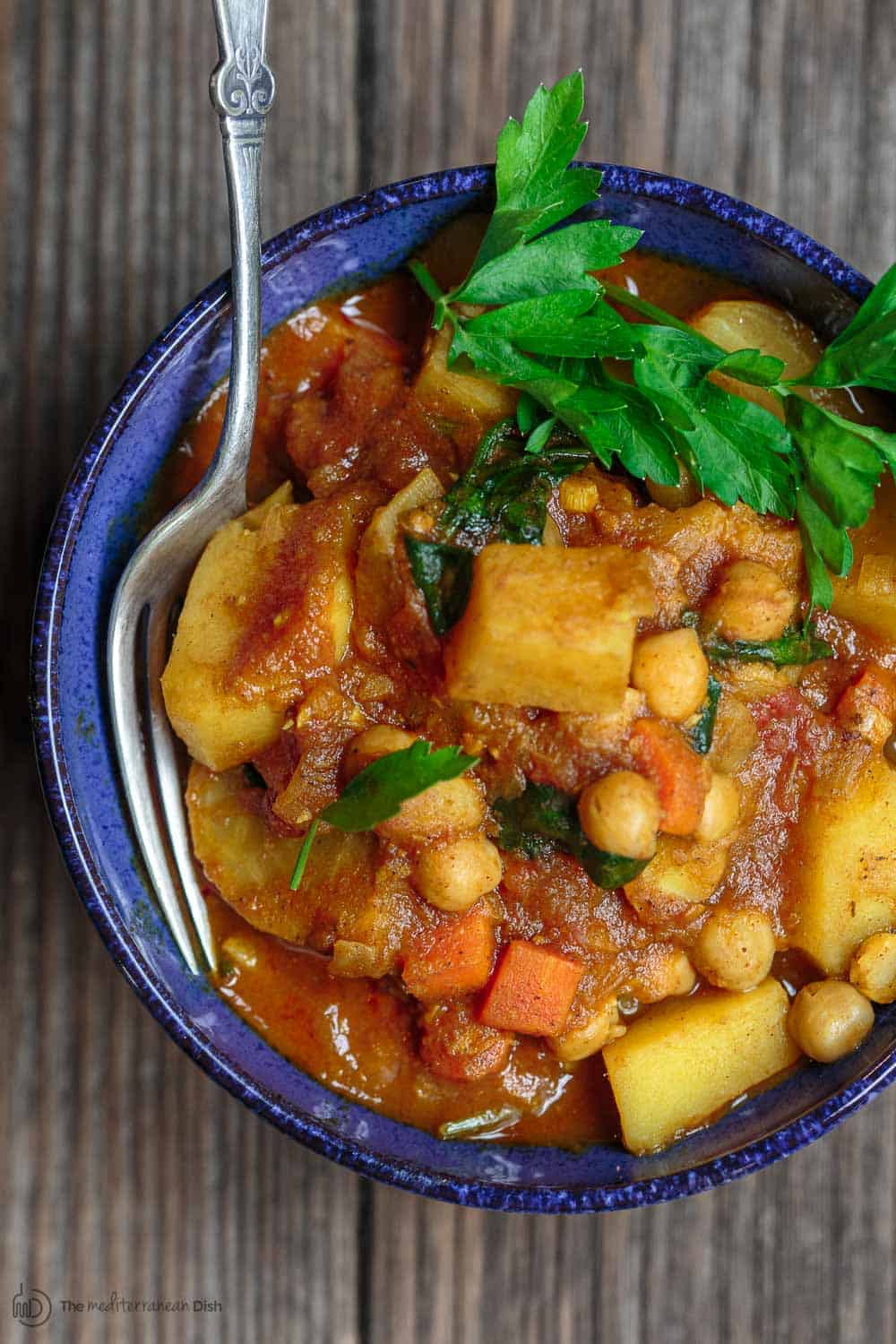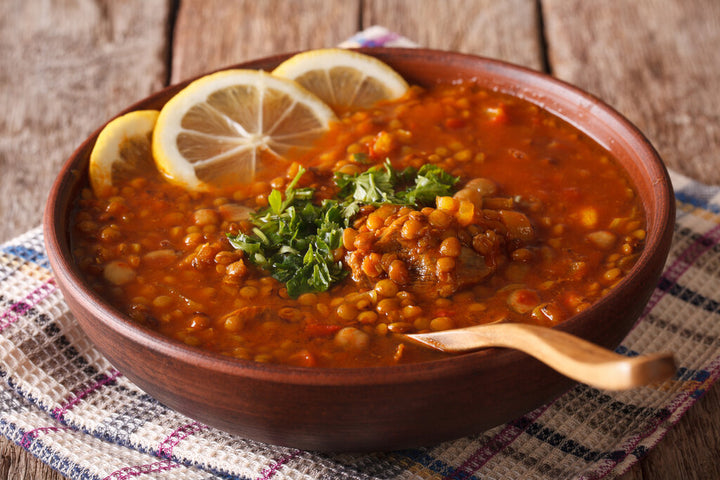Indulge in Unique Moroccan Food Las Vegas at Its Best
Indulge in Unique Moroccan Food Las Vegas at Its Best
Blog Article
Mediterranean Food: A Flavorful Trip Through Tradition and Taste
Mediterranean cuisine functions as an exceptional intersection of tradition and taste, attracting from a varied selection of societies that extend continents. This culinary heritage not just showcases using fresh, neighborhood components however likewise emphasizes the importance of common dining experiences that have been cherished for generations. The profound tastes and health advantages related to the Mediterranean diet plan have garnered international affection, yet underneath its surface area lies an intricate narrative of historic influences and regional specializeds that warrant further exploration. What one-of-a-kind components add to its enduring appeal and relevance in modern cooking methods?
Origins of Mediterranean Cuisine
The beginnings of Mediterranean food are deeply rooted in an abundant tapestry of background, location, and cultural exchange. This culinary custom arises from a region specified by its varied landscapes, including shorelines, mountains, and fertile levels, which have actually influenced its agricultural techniques and food manufacturing. The Mediterranean Basin, encompassing nations such as Italy, Greece, Spain, and Turkey, has actually been a crossroads of human beings for centuries, where profession courses facilitated the exchange of active ingredients, strategies, and culinary viewpoints.
Ancient societies, including the Greeks and Romans, significantly designed Mediterranean foodways, highlighting the significance of fresh, seasonal fruit and vegetables and common dining. The spread of farming, particularly the cultivation of grains, grapes, and olives, laid the structure for dishes that stay staples today. In addition, the influence of various conquerors and investors, such as the Moors and Ottomans, introduced brand-new flavors and cooking styles, even more improving the cuisine.
Today, Mediterranean food is commemorated not only for its taste and variety however likewise for its focus on healthy consuming, personifying a balanced method to nutrition that proceeds to appeal to global tastes. This historical interaction of active ingredients and societies develops the significance of what we now acknowledge as Mediterranean food.
Trick Active Ingredients and Flavors
Mediterranean food is identified by a vivid selection of crucial ingredients and flavors that show the region's farming bounty and cultural heritage. Central to this cooking tradition are fresh vegetables, fruits, and herbs, which provide vital nutrients and lively preferences. mediterranean restaurant las vegas. Staples such as tomatoes, eggplants, olives, and bell peppers are frequently featured, showcasing the area's varied climate and soil
Olive oil, frequently considered as the foundation of Mediterranean food preparation, conveys richness and depth to dishes. It is matched by a range of seasonings and natural herbs, consisting of oregano, garlic, and basil, which elevate the tastes of meats, seafood, and grains. Grains, especially wheat and rice, act as basic components, with recipes like couscous and pasta being staples across the area.
Additionally, beans such as lentils and chickpeas not just offer healthy protein but likewise add to the food's heartiness. Jointly, these components create an unified balance that defines Mediterranean cuisine.
Regional Variants and Specialties
Diverse local variants and specialties characterize Mediterranean food, showing the distinct social impacts, location, and background of each location. In the seaside areas of Italy, for instance, seafood preponderates, with recipes like Sicilian caponata showcasing a mix of eggplant, olives, and capers. At the same time, Greece is renowned for its usage of feta cheese, olives, and fresh herbs, apparent in classic prep work such as moussaka and spanakopita.
The Levantine nations, consisting of Lebanon and Syria, emphasize using flavors and grains, with specialties like tabbouleh and kibbeh taking spotlight. North Africa, especially Morocco, sticks out for its aromatic tagines and couscous, usually enriched with dried fruits and a rich range of flavors.
On the other hand, the Iberian Peninsula highlights the usage of treated meats and strong tastes, with Spanish paella and Portuguese bacalhau exemplifying the region's cooking diversity.
Each Mediterranean area not just commemorates its regional components yet also reflects the historical trade paths and social exchanges that have shaped its food culture, producing a lively tapestry of tastes that astounds the taste.
Food Preparation Techniques and Designs
Food preparation techniques and designs in Mediterranean cuisine are as varied as the areas themselves, often mirroring available ingredients and neighborhood practices. The heart of Mediterranean cooking depends on its simpleness, where fresh fruit and vegetables, Recommended Site herbs, and olive oil take facility stage. Methods such as barbecuing, roasting, and sautéing are typically utilized, allowing the natural tastes of the active ingredients to shine.
Grilling, widespread in seaside locations, infuses seafood and meats with a smoky richness, while roasting, specifically between East, enhances the sweet taste of origin vegetables and meats. Sautéing, often used in Italian and Spanish dishes, supplies a quick method to highlight the splendor of garlic and onions, working as a structure for numerous sauces.
Stewing is one more important technique, particularly in North African foods, where tagines simmer aromatic flavors and tender meats slowly, blending tastes gradually - mediterranean restaurant las vegas. Cooking, particularly in the context of bread and pastries, holds a considerable place in Mediterranean society, with each area flaunting its very own specialties. Overall, these diverse cooking approaches not only commemorate the active ingredients yet additionally reflect the deep-rooted culinary heritage of the Mediterranean, making each meal a testament to its abundant background

Health And Wellness Conveniences of Mediterranean Diet Plan
On a regular basis acknowledged for its numerous health and wellness advantages, the Mediterranean diet highlights the intake of whole, minimally refined foods that promote total well-being. This dietary pattern is rich in fruits, veggies, whole grains, legumes, nuts, and healthy fats, particularly olive oil, while motivating modest intake of fish and poultry and limiting red meat and desserts.
Research study consistently connects the Mediterranean diet to a selection of health advantages. Notably, it has actually been related to a lowered danger of cardio illness, mostly as a result of its emphasis on heart-healthy fats and anti-oxidants. The diet plan is additionally believed to boost cognitive function and might reduce the risk of neurodegenerative conditions such as Alzheimer's.
Additionally, the Mediterranean diet plan supports weight administration via its concentrate on nutrient-dense foods that advertise satiety. The high fiber material from fruits, vegetables, and entire grains help digestion and helps preserve healthy and balanced blood sugar level levels.
Along with physical health and wellness, the Mediterranean diet promotes social well-being, as it urges communal dishes and shared culinary experiences. Overall, adopting this diet regimen is not just a path to enhanced wellness but also a celebration of flavors, society, and neighborhood.

Conclusion
Finally, Mediterranean cuisine acts as an abundant tapestry of tradition and preference, showcasing diverse get more regional flavors and ingredients. The focus on fresh produce, olive oil, and aromatic natural herbs not just boosts cooking experiences but also advertises many health benefits. By welcoming time-honored cooking methods and promoting public eating, this culinary heritage proceeds to motivate and link people across cultures, solidifying its status as a valued and prominent element of international gastronomy.

Cooking methods and designs in Mediterranean cuisine are as differed as the regions themselves, frequently mirroring neighborhood traditions and available components.In conclusion, Mediterranean food serves as More Info an abundant tapestry of custom and taste, showcasing diverse local tastes and ingredients.
Report this page